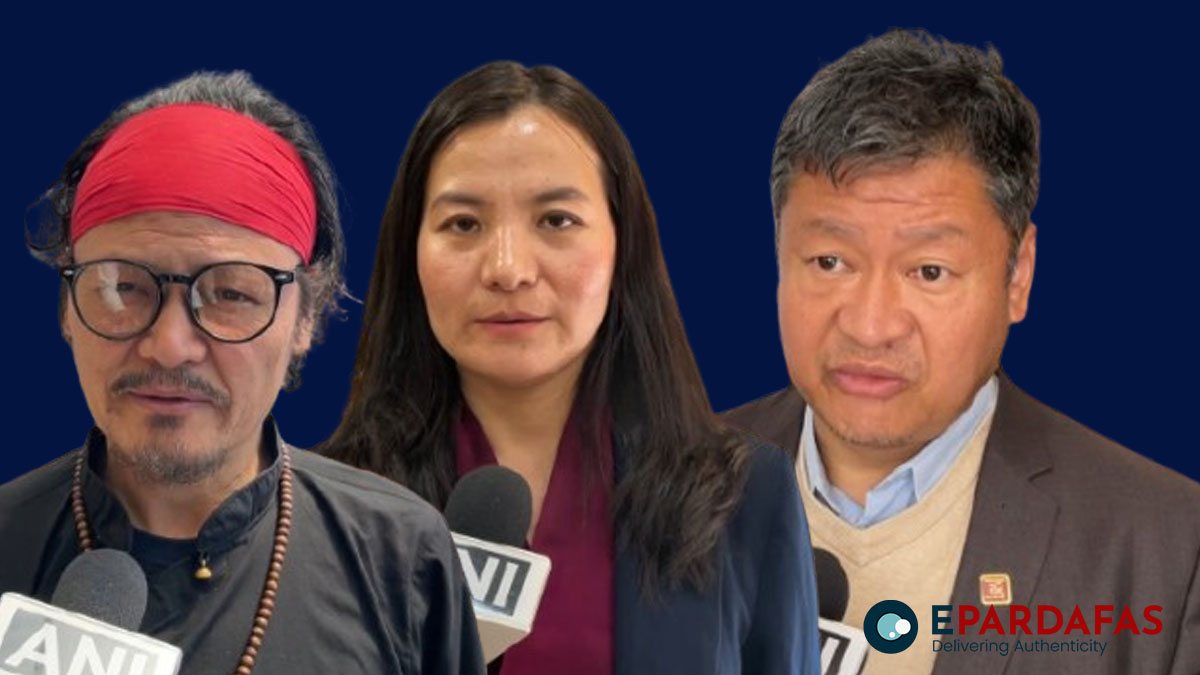
Tibetan Exile Community Condemns China’s White Paper on Human Rights Amid New Abuse Allegations

Tibetans in exile have strongly denounced China’s recently released white paper on human rights, calling it a deceptive narrative that ignores the grim realities faced by Tibetans under Chinese rule. The condemnation comes alongside a damning new report published by the Tibetan Centre for Human Rights and Democracy (TCHRD), which accuses Chinese authorities of committing crimes against humanity in Driru County—one of the most heavily militarized and tightly controlled regions in Tibet.
Titled “If Gyalmo Ngulchu Could Feel: Crimes Against Humanity in Driru,” the report documents widespread, systematic human rights violations committed between 2012 and 2022. These include arbitrary detentions, torture, extrajudicial killings, and severe persecution of local Tibetans.
“The report presents extensive evidence of crimes against humanity, including persecution, arbitrary detention, torture, and extrajudicial killings as part of a state-led policy to suppress resistance and identity,” said TCHRD Executive Director Tenzin Dawa in a statement to ANI.
One of the report’s focal points is a violent crackdown that began on September 28, 2013, when residents of Driru threw Chinese flags into the Gyalmo Ngulchu River in protest against a state-imposed campaign mandating the display of the Chinese national flag. The protest was met with brutal retaliation from authorities, which, the report argues, marked a turning point in China’s intensifying repression in the region.
Tenzin Lekshay, spokesperson for the Tibetan government-in-exile, also criticized the white paper, calling it a hollow document that fails to address core human rights principles. “What China is calling a white paper is nothing more than a justification of its actions in Tibet. It focuses solely on development aimed at ensuring China’s own stability,” he told ANI.
“If the Chinese government were truly committed to human rights, it would address freedoms such as expression, belief, and movement—none of which are protected in Tibet today,” he added. “Under Xi Jinping’s rule, political repression and civil rights violations have only worsened. This so-called white paper is more about self-preservation than protecting Tibetans.”
Tibetan activist and writer Tenzin Tsundue went further, accusing the white paper of being an attempt to legitimize China’s decades-long occupation of Tibet. “I’ve reviewed all eight chapters of the document. Every section is designed to do just one thing: justify 75 years of Chinese invasion and occupation,” he said.
“They claim they are developing Tibet and protecting human rights—but from whom? From themselves?” Tsundue asked, pointing to China’s exploitation of Tibet’s environment and displacement of nomads and farmers. “Over a million Tibetans have died under Chinese rule. More than 6,000 monasteries have been destroyed. The white paper blames external actors like the U.S. and His Holiness the Dalai Lama, but it’s the Chinese government that has carried out the destruction.”
Tsundue emphasized that Chinese policies have led to environmental devastation, such as glacial melting, widespread mining, deforestation, and forced relocations—actions that, he said, belie China’s claims of protecting Tibet’s ecology and people.
The TCHRD report and the exile community’s strong response have reignited calls for international scrutiny and action regarding human rights in Tibet, with activists urging global leaders to hold China accountable for its actions.












Comments